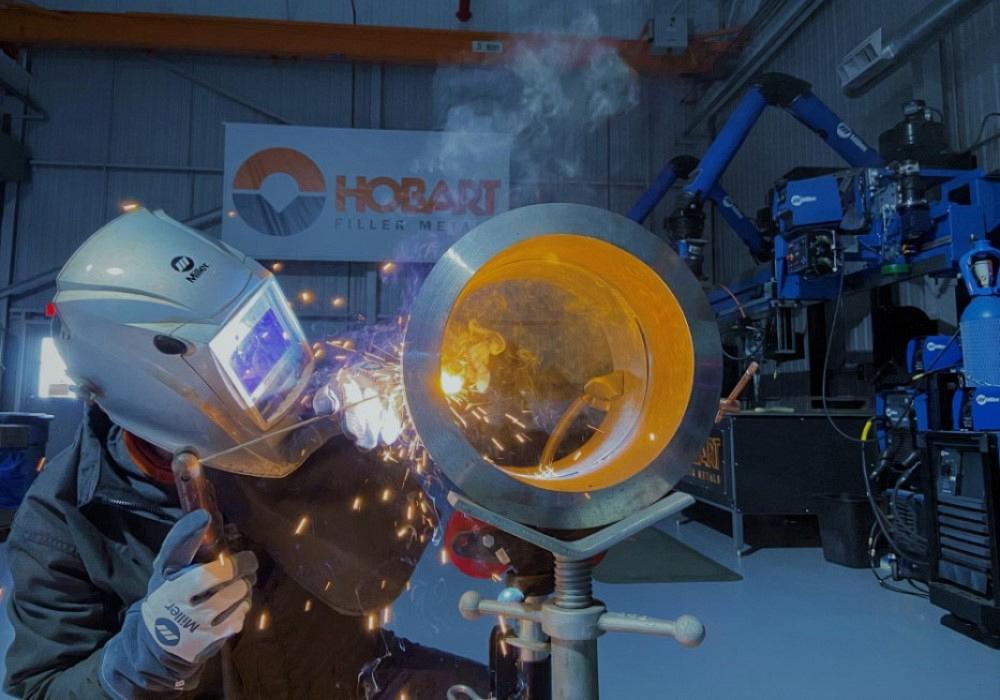Step-by-Step Guide to Preventing Weld Undercut in Different Metals
Step-by-Step Guide to Preventing Weld Undercut in Different Metals
Blog Article
A Comprehensive Overview to Identifying, Stopping, and Dealing With Undercut Welding Troubles in Your Welding Tasks
In the world of welding, running into undercut concerns is an usual challenge that can endanger the structural honesty and total top quality of your welding projects. Understanding the source behind undercut welding, being able to properly spot it in your welds, and applying reliable preventative steps are crucial skills for any kind of welder. Furthermore, having the understanding and methods to remedy undercut problems when they do take place can make a considerable distinction in the final outcome of your welding undertakings. Keep tuned as we check out the necessary elements of recognizing, stopping, and taking care of undercut welding problems, supplying you with valuable understandings and techniques to elevate your welding abilities to the following level.
Typical Root Causes Of Undercut Welding
Undercut welding, an usual concern in welding procedures, can be created by various factors that need to be carefully identified and dealt with to make sure the stability of the weld joint. One of the main causes of undercut welding is excessive heat input.
Another usual reason of undercut welding is inappropriate welding method. Insufficient control of the welding torch or weapon, inaccurate angle or range between the torch and the workpiece, or inconsistent traveling rate can all contribute to the formation of undercut. Additionally, using the incorrect welding consumables or electrode dimension for a specific joint configuration can lead to undercut concerns. Recognizing these source and applying rehabilitative procedures is vital in avoiding and rectifying undercut welding troubles in welding jobs.
Identifying Undercut in Welds

To recognize undercut properly, correct lights and magnification tools are important to examine the weld joint completely. Utilizing tools such as a welding gauge or a magnifying glass can help in spotting even the smallest undercut blemishes. In addition, running a finger or a fingernail along the weld joint can occasionally reveal undercut, as the surface might really feel unequal or have a dip where the undercut exists.
Precautionary Procedures for Undercut
Having a deep understanding of the root causes of undercut in welds enables the implementation of effective preventive actions to keep weld top quality and stability. One vital precautionary step appertains weld joint preparation. Making certain that the sides are clean, devoid of contaminants, and effectively beveled can dramatically lower the probability of undercut (Preventing weld undercut). Additionally, picking the proper welding parameters, such as voltage, current, and take a trip speed, is essential. These setups ought to be maximized to stop excessive warmth input, which can result in damage formation.

Methods for Fixing Undercut

Boosting the welding current or reducing the travel rate can assist fill in the undercut. Furthermore, changing the welding strategy from a press to a drag or vice versa can also help decrease undercut.
An additional technique is to use a weaving movement while welding to ensure correct sidewall fusion and fill in the undercut. By oscillating the welding arc from side to side within the weld joint, the welder can transfer much more filler material into the undercut locations, effectively eliminating the issue.
Additionally, grinding out the undercut and rewelding the joint can be a viable service for much more extreme undercut concerns - Preventing weld undercut. This process entails getting rid of the undercut area, preparing the base metal, and after that rewelding the joint with proper welding parameters and strategies to protect against undercut from returning

Specialist Tips for Avoiding Undercut
Utilizing proper welding methods and keeping control over vital welding specifications are crucial methods for welders intending to avoid undercut in their weld joints. One professional pointer for preventing undercut is to make sure appropriate joint prep work. This includes cleansing the base metal thoroughly to eliminate any type of impurities that can lead to damage formation. Furthermore, picking the ideal welding procedure and filler steel for the certain application can help stop undercut. Welders ought to additionally pay close focus to the welding existing and voltage settings, ensuring they are within the recommended range to avoid getting too hot and possible undercut. Keeping a constant travel rate throughout the welding procedure is one more important suggestion to avoid undercut. By relocating at a stable speed, welders can ensure proper blend and minimize the possibility of undercut development. Lastly, checking the weld bead after conclusion can aid recognize any indications of undercut early, permitting immediate corrective activity to be taken.
Verdict
To conclude, recognizing, preventing, and repairing undercut welding problems in your welding projects is essential for guaranteeing durable and solid welds. Preventing weld undercut. By recognizing the usual causes of undercut, being able to identify it in welds, implementing preventative actions, and utilizing correct methods for repairing undercut, you can avoid potential concerns and produce premium welds. Following specialist ideas for avoiding undercut can aid you enhance your welding skills and generate much better cause your tasks
Undercut welding, a typical issue in welding procedures, click reference can be triggered by various factors that require to be thoroughly identified and dealt with to guarantee the honesty of the weld joint. Furthermore, running a finger or a fingernail along the weld joint can often disclose undercut, as the surface area may really feel uneven or have a dip where the undercut exists.
Using proper welding methods and maintaining control over crucial welding parameters are vital techniques for welders intending to prevent undercut in their weld joints.In final thought, recognizing, avoiding, and taking care of undercut welding problems in your welding jobs is critical for guaranteeing solid and durable welds. By recognizing the common causes of undercut, being able to recognize it basics in welds, implementing preventive actions, and utilizing appropriate strategies for fixing undercut, you can prevent possible concerns and create premium welds.
Report this page